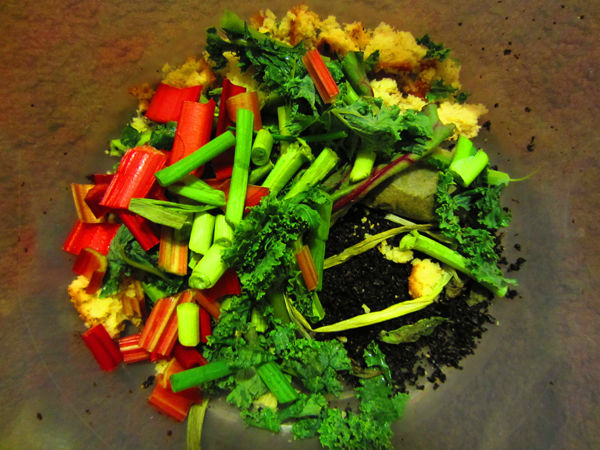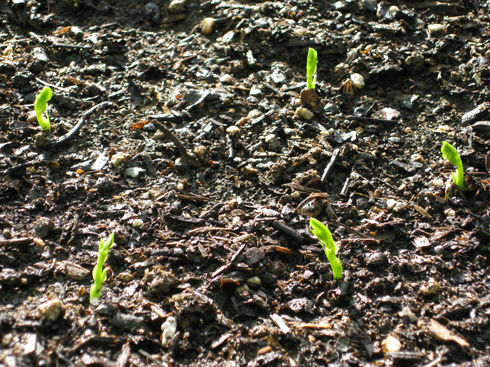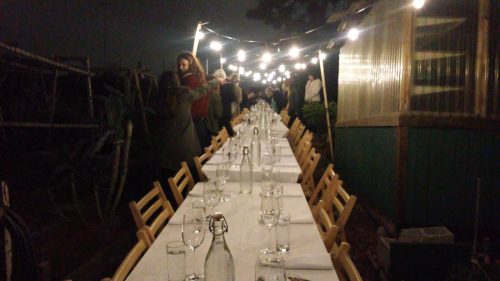This is the perfect Ask Gardenerd question for those with no room for a compost bin. It came from Nancy Ross:
“I have been putting my scraps for compost directly into my raised beds. Is this OK? Will this reduce the need for plant food? Thanks!”
Great question, Nancy. The short answer is, yes, you can do that. Let’s explore the details.
A lot of people who don’t have room for a compost bin, or who don’t have the energy or strength to turn compost from one place to another, adopt the simple concept of in-ground composting. You dig a hole, drop in your scraps, and bury it. That’s about it. But there are tips for greater success along the way:
Composting in Garden Beds
- If you choose to bury your scraps in the garden directly, make sure you dig your hole at least 2 feet away from any perennial crops (artichokes, rhubarb, etc.) so as not to disturb the roots of neighboring plants.
- Dig a hole at least 12″ deep. Critters can smell your scraps from far away and will want to investigate.
- Water afterward. Water helps begin the process of decomposition. Keep the area moist but not soggy.
Chop, Chop, Chop
Another important tip to remember is this: the smaller the pieces, the faster they break down. Smaller pieces have more surface area for microbes and worms to munch on. So take the extra step and cut kitchen waste into 2″ pieces for faster results. Some people freeze or puree their food scraps to facilitate even faster breakdown.
Do I still need plant food?
It’s hard to say, because it often depends on what you are decomposing (composting). If you add a lot of eggshells you won’t need calcium, but you might still need Phosphorus or Potassium. Generally speaking, the act of composting directly in the beds invites microbes to the party. So increased microbial activity means you have more biologically active soil, which could mean that the nutrient-cyclers in the Soil Food Web (namely protozoa and nematodes) will make those newly deposited nutrients from food scraps available to plants after a time.
It’s best to wait a few weeks to a couple months before planting in the spot where buried food scraps lay. We suggest using a plant marker or stake to indicate where scraps have been buried. If you use a trench method along the length of your garden bed, place a stake along the trench at the edge of your buried scraps, then move the stake to the new “end” after adding the next batch. Pretty soon you’ll be able to circle back to the beginning of the trench and plant your seasonal crops in soil that has been aerated by microbes and fertilized by worm castings and decomposed food waste.
We hope this helps, Nancy. Thanks for writing in!
Hey gardenerds, do you have a favorite way to compost? Share it in the comments below.




